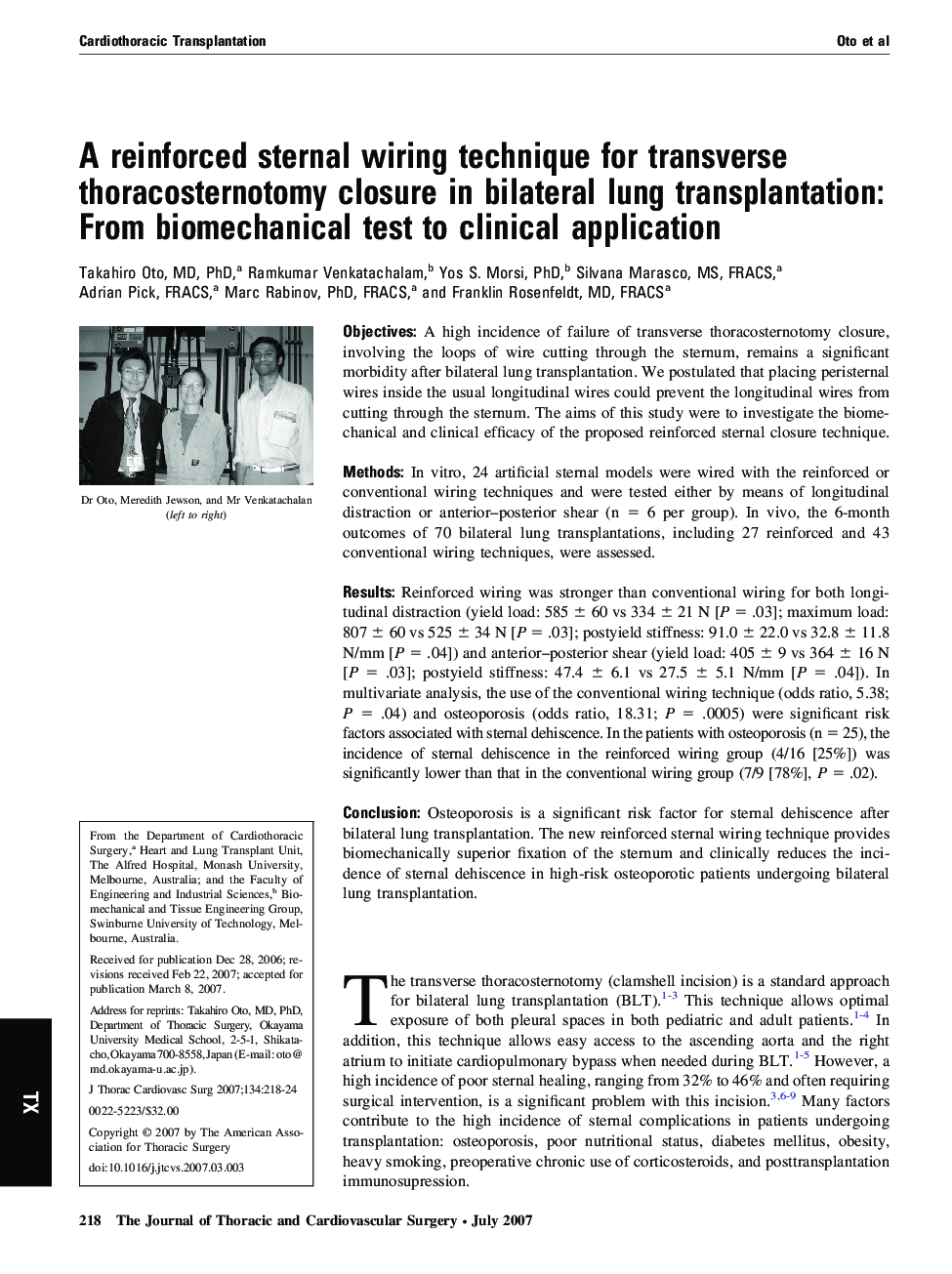| کد مقاله | کد نشریه | سال انتشار | مقاله انگلیسی | نسخه تمام متن |
|---|---|---|---|---|
| 2983474 | 1578696 | 2007 | 7 صفحه PDF | دانلود رایگان |

ObjectivesA high incidence of failure of transverse thoracosternotomy closure, involving the loops of wire cutting through the sternum, remains a significant morbidity after bilateral lung transplantation. We postulated that placing peristernal wires inside the usual longitudinal wires could prevent the longitudinal wires from cutting through the sternum. The aims of this study were to investigate the biomechanical and clinical efficacy of the proposed reinforced sternal closure technique.MethodsIn vitro, 24 artificial sternal models were wired with the reinforced or conventional wiring techniques and were tested either by means of longitudinal distraction or anterior–posterior shear (n = 6 per group). In vivo, the 6-month outcomes of 70 bilateral lung transplantations, including 27 reinforced and 43 conventional wiring techniques, were assessed.ResultsReinforced wiring was stronger than conventional wiring for both longitudinal distraction (yield load: 585 ± 60 vs 334 ± 21 N [P = .03]; maximum load: 807 ± 60 vs 525 ± 34 N [P = .03]; postyield stiffness: 91.0 ± 22.0 vs 32.8 ± 11.8 N/mm [P = .04]) and anterior–posterior shear (yield load: 405 ± 9 vs 364 ± 16 N [P = .03]; postyield stiffness: 47.4 ± 6.1 vs 27.5 ± 5.1 N/mm [P = .04]). In multivariate analysis, the use of the conventional wiring technique (odds ratio, 5.38; P = .04) and osteoporosis (odds ratio, 18.31; P = .0005) were significant risk factors associated with sternal dehiscence. In the patients with osteoporosis (n = 25), the incidence of sternal dehiscence in the reinforced wiring group (4/16 [25%]) was significantly lower than that in the conventional wiring group (7/9 [78%], P = .02).ConclusionOsteoporosis is a significant risk factor for sternal dehiscence after bilateral lung transplantation. The new reinforced sternal wiring technique provides biomechanically superior fixation of the sternum and clinically reduces the incidence of sternal dehiscence in high-risk osteoporotic patients undergoing bilateral lung transplantation.
Journal: The Journal of Thoracic and Cardiovascular Surgery - Volume 134, Issue 1, July 2007, Pages 218–224